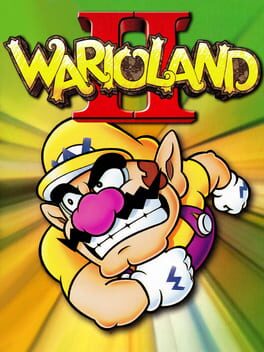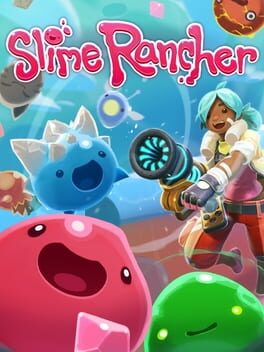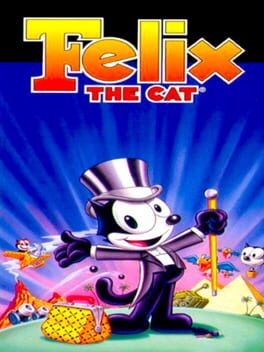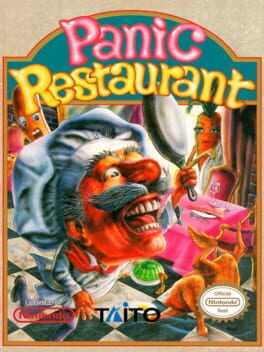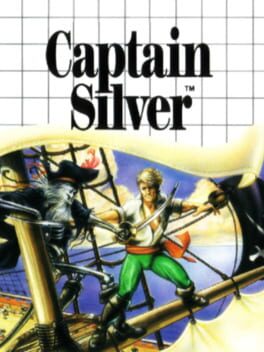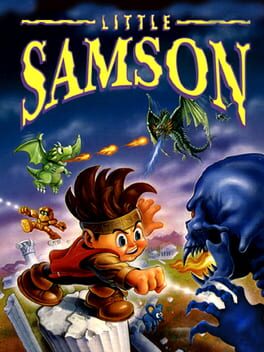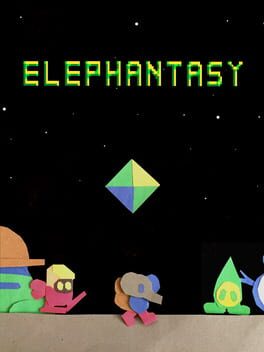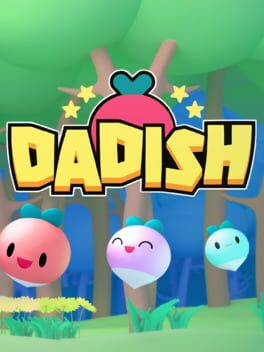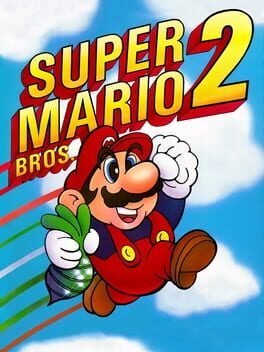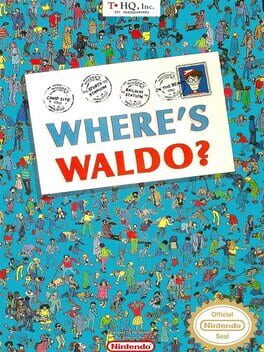OddTurtle
1994
101% completed. Didn’t expect to enjoy this as much as I did. I like my platformers precision-based rather than momentum-based, so this was right up my alley. This game really shines in its simple, intuitive level design and it’s obvious that a lot of care went into making sure the striking visuals didn’t interfere with the gameplay. Definitely plan to check out the sequels.
1998
I intended on completing all of the side stages, but man, I just couldn't. This game has a lot of clever ideas, especially in the way enemies are recontextualized as tools in many places, but the controls can't keep up. There's a constant sense of lag every time you start or stop moving, which removes that ever-important sense of satisfaction in movement that the main Mario series nails so well. Also, the final boss (of the main story) was extremely unintuitive. After slamming my head against it for a while, I had to look up how to do it, and I know the only way I would have ever figured it out on my own is dumb luck. I do appreciate the sheer amount of content they packed into this little cartridge, and the presentation is excellent, but the fundamental issue of movement made the whole experience pretty mediocre for me.
2016
Slime Rancher is fun, cute, but ultimately kind of shallow. For some people, I think the pure aesthetics and the cuteness of the slimes will be enough to carry them through countless hours, but for me I couldn't even make it to 20.
The fundamental issue, I think, lies with the slimes themselves. They simply aren't deep or complex enough in their behaviors to make them interesting to raise. Most slimes have a single unique behavior that sets them apart from the others. These behaviors make them fun to discover the first time, but you figure out how to work around them extremely quickly. Rock slimes roll up into a spiky ball sometimes, but all this does is prevent you from feeding them for a few seconds. Rad slimes and boom slimes discourage you from getting close, but you literally have a vacuum gun to shoot food at them from a distance. Honey slimes... do nothing. Tangle slimes... do basically nothing. As far as I can tell, the only slime that requires substantial effort to raise is the fire slime, but I discovered it so late in my playthrough that I never even bothered to try raising them. Slimes can't even interact with each other in interesting ways because they will transform into Largos when they eat each others plorts.
Beyond this, I did find the world fun to explore. Once you get the jetpack, it becomes a game of calculating how far or high you can go. I ended up taking harder or possibly unintended paths to various spots just because I found it fun to move around that way. However, most of the things you can find in the wild just aren't that interesting. Gordos are the most interesting things to find, and only because they often have keys to yet more areas. (Finding out where the crystal slimes are was probably my favorite moment of the whole playthrough!)
You can also complete quests from a few NPCs, and doing so unlocks a few different minigames. The game clearly expects you to do the minigames several times to "rank up" within each game but I felt I had seen all they had to offer in a single go. Speaking of ranking up, Slime Rancher has a system where you can pay for higher ranks to unlock customization options. The only remotely useful upgrade is a vending machine where you can buy toys for your slimes to keep them calm. After the early game, the ranks are literally the only major use for money that I could find, quickly costing dramatically more than anything else.
Overall, Slime Rancher nails the aesthetics and worldbuilding but just fails to deliver a gameplay experience that can sustain itself for very long. I do think it's worth a short playthrough, but not much else.
The fundamental issue, I think, lies with the slimes themselves. They simply aren't deep or complex enough in their behaviors to make them interesting to raise. Most slimes have a single unique behavior that sets them apart from the others. These behaviors make them fun to discover the first time, but you figure out how to work around them extremely quickly. Rock slimes roll up into a spiky ball sometimes, but all this does is prevent you from feeding them for a few seconds. Rad slimes and boom slimes discourage you from getting close, but you literally have a vacuum gun to shoot food at them from a distance. Honey slimes... do nothing. Tangle slimes... do basically nothing. As far as I can tell, the only slime that requires substantial effort to raise is the fire slime, but I discovered it so late in my playthrough that I never even bothered to try raising them. Slimes can't even interact with each other in interesting ways because they will transform into Largos when they eat each others plorts.
Beyond this, I did find the world fun to explore. Once you get the jetpack, it becomes a game of calculating how far or high you can go. I ended up taking harder or possibly unintended paths to various spots just because I found it fun to move around that way. However, most of the things you can find in the wild just aren't that interesting. Gordos are the most interesting things to find, and only because they often have keys to yet more areas. (Finding out where the crystal slimes are was probably my favorite moment of the whole playthrough!)
You can also complete quests from a few NPCs, and doing so unlocks a few different minigames. The game clearly expects you to do the minigames several times to "rank up" within each game but I felt I had seen all they had to offer in a single go. Speaking of ranking up, Slime Rancher has a system where you can pay for higher ranks to unlock customization options. The only remotely useful upgrade is a vending machine where you can buy toys for your slimes to keep them calm. After the early game, the ranks are literally the only major use for money that I could find, quickly costing dramatically more than anything else.
Overall, Slime Rancher nails the aesthetics and worldbuilding but just fails to deliver a gameplay experience that can sustain itself for very long. I do think it's worth a short playthrough, but not much else.
1992
A nice, simple breezy game that I finished in a few hours. The only truly challenging parts are the final boss and the levels where you’re on the surface of the water. I appreciated that every type of level had different stages of powerups, though it was a little odd that not every type had the same number. The normal platforming stages have four, but the flying levels only have three, and the space level just has one. The controls were a tad slippery but overall fun. The art was a bit janky in some places (like the space levels) but great in others (like the beach, had a great Wonder Boy vibe). Not a fan of the music.
1992
A fine enough little NES action platformer, but there are a few hitches holding it back. The biggest one is that some of the enemy placements are just plain cheap. The kebabs in the fourth stage move so fast that you absolutely have to memorize where they are. I still haven’t figured out how to beat the wok boss without getting hit. The leaping fish in the last stage move way too fast to dodge as well. Your plucky little chef moves very slowly, which I’m fine with, but the enemies sometimes feel like they were built for a different character.
The extra weapons you can pick up make for a mixed bag. The spoon, which extends your reach a bit, is fine but you never feel relieved to see it. The ranged attack, the dishes, are excellent in the third stage to get rid of the toaster enemies, but otherwise their arc makes them unwieldy. The fork, which operates like a pogo stick, is genuinely useless. No clue what it’s here for. In truth, your base frying pan feels perfectly adequate for most of the game, with the extra weapons not providing much for dynamic play.
Finally, the bonus games you can enter are functionally worthless. They only give you points, and while points can get you more lives, the number you get from these games is paltry. The most I ever got was 1800, and I’m pretty sure you need 50,000 for another life. The one in stage 5 does seem to skip you ahead a few rooms, though, so it’s always worth it.
There is plenty of detail in the stages, each of which presents unique enemies and obstacles. The music and sound were pleasant as well.
All in all, Panic Restaurant just lacks a bit of polish. It’s fun if you’re into retro action platformers, but it isn’t a great way to get into them, and it certainly isn’t worth the price an authentic cartridge will run you nowadays.
The extra weapons you can pick up make for a mixed bag. The spoon, which extends your reach a bit, is fine but you never feel relieved to see it. The ranged attack, the dishes, are excellent in the third stage to get rid of the toaster enemies, but otherwise their arc makes them unwieldy. The fork, which operates like a pogo stick, is genuinely useless. No clue what it’s here for. In truth, your base frying pan feels perfectly adequate for most of the game, with the extra weapons not providing much for dynamic play.
Finally, the bonus games you can enter are functionally worthless. They only give you points, and while points can get you more lives, the number you get from these games is paltry. The most I ever got was 1800, and I’m pretty sure you need 50,000 for another life. The one in stage 5 does seem to skip you ahead a few rooms, though, so it’s always worth it.
There is plenty of detail in the stages, each of which presents unique enemies and obstacles. The music and sound were pleasant as well.
All in all, Panic Restaurant just lacks a bit of polish. It’s fun if you’re into retro action platformers, but it isn’t a great way to get into them, and it certainly isn’t worth the price an authentic cartridge will run you nowadays.
2022
1987
A fun, short-but-sweet action platformer with some incredibly baffling regional differences. I played the Master System version, which has six stages… unless, of course, you play the American version. In the US, they used a smaller cartridge size and consequently had to cut the third and fourth stages. As a result, reading the manual gives some extremely incorrect ideas about what the game will actually contain, listing four whole bosses that simply don’t appear. You can probably guess how baffling the whole experience was.
As for the game itself, it’s honestly pretty good. The combat is quick since enemies generally die in one hit. The controls are pretty smooth and responsive. Where Captain Silver really shines, however, are the visuals. The first stage especially is one of the better visuals I’ve seen on the console. Our hero himself does look kind of odd though, with his head always tilted towards the ground in a forlorn expression.
The final stage (stage 4 in the version I played) does take a turn for the worse, switching from action to pure platforming. There are a ton of moving cloud platforms and they always turn right before you expect them to, leading to many untimely deaths. What’s worse is that when you make it to the second screen, if you fall down to the first and die, your checkpoint gets reset to the start of the stage instead of the second screen. Frustrating.
Overall, I enjoyed my (incredibly short) time with Captain Silver. At some point I’ll probably return to play the “full” version. In the meantime, this is the first review for the game on here! If this kind of game is your style, definitely play the European/Japanese version for the true experience.
As for the game itself, it’s honestly pretty good. The combat is quick since enemies generally die in one hit. The controls are pretty smooth and responsive. Where Captain Silver really shines, however, are the visuals. The first stage especially is one of the better visuals I’ve seen on the console. Our hero himself does look kind of odd though, with his head always tilted towards the ground in a forlorn expression.
The final stage (stage 4 in the version I played) does take a turn for the worse, switching from action to pure platforming. There are a ton of moving cloud platforms and they always turn right before you expect them to, leading to many untimely deaths. What’s worse is that when you make it to the second screen, if you fall down to the first and die, your checkpoint gets reset to the start of the stage instead of the second screen. Frustrating.
Overall, I enjoyed my (incredibly short) time with Captain Silver. At some point I’ll probably return to play the “full” version. In the meantime, this is the first review for the game on here! If this kind of game is your style, definitely play the European/Japanese version for the true experience.
This is a game that has absolutely no right to look, sound, and play as well as it does. It’s a genuine hidden gem on the GBC. The pixel art is impressive, the music is incredible (has a bit of a demo scene vibe, almost), and it plays great too. The only major flaws are some enemies that come out of nowhere and some collectibles that are cryptic to reach. (I swear there’s one in the last stage that you can’t collect at first, then later you get a slightly higher jump for no reason and can come back to get it. Very odd.) There’s also some serious attention to detail here - most enemies can blow themselves up with their own munitions, and it’s funny every time they do. If you like GBC games or Looney Tunes it’s well worth a play.
1992
This one just really didn’t click with me. I really thought I’d enjoy it more, what with it being a late-era NES platformer, but by the time I was around 2/3 of the way in, I just couldn’t take it anymore and started using save states. I think what took this game from challenging to frustrating can be boiled down to a single design decision: if you die as any character but the lead, that character is permanently gone until you game over or finish the stage. Now, this is a game that clearly wants you to constantly swap between its four protagonists to solve problems as they appear. You can choose to tackle each problem with any character. However, it definitely feels like some characters are much more optimal than others in each situation, especially for the bosses. If I’m trying to beat a boss with the dragon, and upon dying, I can no longer play as the dragon, it just makes me want to stop playing. No other character can deal with this situation the way the dragon can and repeatedly dying to game over and get her back sounds like a waste of my time. I think this system is trying to incentivize me to try more characters, but personally I’d prefer to have the choice to bang my head against a problem as many times as I’d like before deciding to switch. It’s incredible how a single factor can really ruin the experience.
As for what I liked, there was quite a bit. The music is memorable, and the graphics are gorgeous (though they get kind of messy in some places). Where this game really excels is control. All four characters feel smooth and responsive to play, and over time you really get a strong sense of when to swap to use their unique strengths.
If I were to suggest a change, it would be to revive all characters when you die. This would make things much less frustrating and would also free up the lead character to have an ability other than climbing, since that’s the mouse’s power. Personally I’d give him a spread shot or something since none of the characters are great at dealing with threats that come in diagonally.
Maybe I’ll warm up to this over time. Like many NES games, it probably gets better on repeat playthroughs as you learn the mechanics.
As for what I liked, there was quite a bit. The music is memorable, and the graphics are gorgeous (though they get kind of messy in some places). Where this game really excels is control. All four characters feel smooth and responsive to play, and over time you really get a strong sense of when to swap to use their unique strengths.
If I were to suggest a change, it would be to revive all characters when you die. This would make things much less frustrating and would also free up the lead character to have an ability other than climbing, since that’s the mouse’s power. Personally I’d give him a spread shot or something since none of the characters are great at dealing with threats that come in diagonally.
Maybe I’ll warm up to this over time. Like many NES games, it probably gets better on repeat playthroughs as you learn the mechanics.
2021
As someone who occasionally enjoys arranging pixels, the art in this game is absolutely breathtaking. There were moments I audibly gasped at the art, especially the talk sprites, and I took my time taking in everything there was to see. The portraits and enemies are expressive and the tiles and cards are full of intricate detail.
Oh yeah, there's a game here too. It's an idle game, so the actual moment to moment gameplay is kind of shallow. The real fun/strategy comes from the deckbuilding. There are a lot more ways to set up your road than you may initially think. Don't feel bad for looking up some of the more esoteric combinations, because some of them are both very obscure and very useful (ie bookery + vampire mansion). The game does drag on a bit, especially near the end, but it was personally worth it for me just to see the art.
Oh yeah, there's a game here too. It's an idle game, so the actual moment to moment gameplay is kind of shallow. The real fun/strategy comes from the deckbuilding. There are a lot more ways to set up your road than you may initially think. Don't feel bad for looking up some of the more esoteric combinations, because some of them are both very obscure and very useful (ie bookery + vampire mansion). The game does drag on a bit, especially near the end, but it was personally worth it for me just to see the art.
2020
It’s cute, and short, and the way it builds on the use of its 4 tools gets pretty interesting by the end. Got 29/36 of the gems which I’m perfectly happy with. Unfortunately I did have a glitch where I accidentally used the vine in the ice master boss fight, causing his fist to go offscreen, which crashed my game. When it opened again, I had lost my rank but the gems I collected were gone from the world, so I had to start over. Annoying but the game is short enough that it wasn’t too hard to get back to where I was.
102% completed. Somehow, it was even better than the first. The controls are a bit improved, the graphics more polished, there's more to do and see and collect. The only thing that stayed about on par was the music, simply because it's impossible to top the first.
The standout improvement in this sequel had to be the way bonus rooms are used. The secret areas in this game absolutely ache to be found, and virtually all of them are telegraphed in some way. I felt like a genius every time I found a DK coin or a particularly difficult secret room. The addition of the lost world also makes for a great finish, demanding mastery over everything you've done so far, though admittedly the final boss here feels a tad anti-climactic, having only one slightly longer phase.
One small issue I have with this one is that there are perhaps one too many kinds of collectibles to find. You have the ultra-rare DK coins, the bonus reward Kremkoins, and the banana coins used to buy services from the various Kongs. All three of these are the same shade of gold, which personally caused them to blend together a bit in my mind. It isn't really an issue with this game per se, but considering the things I've heard about DK64, the precedent set here begins to worry me. All I hope is that the final game can stick the landing with this thus-far-excellent trilogy.
The standout improvement in this sequel had to be the way bonus rooms are used. The secret areas in this game absolutely ache to be found, and virtually all of them are telegraphed in some way. I felt like a genius every time I found a DK coin or a particularly difficult secret room. The addition of the lost world also makes for a great finish, demanding mastery over everything you've done so far, though admittedly the final boss here feels a tad anti-climactic, having only one slightly longer phase.
One small issue I have with this one is that there are perhaps one too many kinds of collectibles to find. You have the ultra-rare DK coins, the bonus reward Kremkoins, and the banana coins used to buy services from the various Kongs. All three of these are the same shade of gold, which personally caused them to blend together a bit in my mind. It isn't really an issue with this game per se, but considering the things I've heard about DK64, the precedent set here begins to worry me. All I hope is that the final game can stick the landing with this thus-far-excellent trilogy.
2020
A fun little platformer I got at a heavy discount. The controls are nice and meaty, and the stars were mostly all fun to collect. I can't say I enjoyed the mushroom levels too much, the bounces felt a bit too unpredictable for my taste.
One thing that particularly amused me about this game was how much the creator blantantly, yet lovingly, incorporated from other games. Yes, I noticed the Kirby's Adventure clouds in the background, and the Mario sound effects, and what I'm sure were instruments from the DKC games in the background of the mountain levels. Overall it creates a charming little package, though it isn't one I think is worth the full $10 asking price on the Switch. Get it on sale and it makes a fine way to whittle away an afternoon.
One thing that particularly amused me about this game was how much the creator blantantly, yet lovingly, incorporated from other games. Yes, I noticed the Kirby's Adventure clouds in the background, and the Mario sound effects, and what I'm sure were instruments from the DKC games in the background of the mountain levels. Overall it creates a charming little package, though it isn't one I think is worth the full $10 asking price on the Switch. Get it on sale and it makes a fine way to whittle away an afternoon.
1988
The Mario game that dared to ask, "What if we had two desert worlds?"
In all honesty though, I really loved this one. First the presentation is excellent, with really clean and expressive spritework. The environments are all very simple, but there are a lot of little odd details that fill it with life. The whales are my new favorite Mario characters. The sound is fine; the music is iconic (I love the character select theme) but the sound effects are a bit grating, especially when climbing. Tying together the look and feel is the near-complete lack of a HUD. I adore games with minimal UI, it really makes the world that much more immersive and in this instance it emphasizes that dreamlike feel.
On the flip side are the mechanics, and I must say that no matter how you personally feel about the plucking mechanics, the game does a beautiful job integrating them into the world. You can pull vegetables out of the ground to use as ammo, and you can also pick up enemies to throw them at each other. Over time, the game will iterate on this in fascinating ways. At first, you'll only be avoiding enemies and tossing vegetable to get them out of the way. The levels will often line enemies up in such a way that you can take out several in one chain shot if you aim precisely. Eventually, however, the game takes advantage of your ability to stand on top of enemies to create tougher platforming. The first boss you face, Birdo, tests your skills by forcing you to jump on top of her own projectiles and chuck them back at her. She appears numerous times throughout, in different variations and arenas. Later, I was jumpscared by her appearance near the beginning of a level, only to realize with a start that I was meant to hitch a ride on one of her eggs to the other side of a large gap. In World 1, you time your jumps to avoid the leaping Trouters. In World 5, you time your jumps to land on top of the leaping Trouters. These moments of discovery and realization were an absolute delight. Almost every challenge is built on the core mechanic, and as such the game creates a cohesive, satisfying world.
Finally, the last element that cemented this as a classic to me were the secrets. There's a lot more to discover than I was expecting, starting with the subworld. You can pluck potions out of the ground which will spawn a door when thrown. Entering leads to a subworld which creates a dark mirror image of the current screen centered on the door. Any pluckable objects in the mirror world become coins that give chances for more lives, and hidden at certain points in the level are mushrooms that give you more HP. The game begins playing with this concept almost immediately, hiding mushrooms in difficult or secret locations forcing you to choose carefully where to place the door. I know there's a mushroom here, but I could get a big patch of coins over there. Do I need to survive now or can I take a chance at more lives? Discovering where the mushrooms were was quite enjoyable, but there's even more to the subworld than meets the eye. The first time I discovered a secret warp, my jaw dropped. Outside of the subworld, there are some levels where a little exploration will allow you to skip ahead, as early as the first level.
Though I did visit every level, I am absolutely certain that there is plenty I didn't see in this world, and I am sure that I will be revisiting it many times.
In all honesty though, I really loved this one. First the presentation is excellent, with really clean and expressive spritework. The environments are all very simple, but there are a lot of little odd details that fill it with life. The whales are my new favorite Mario characters. The sound is fine; the music is iconic (I love the character select theme) but the sound effects are a bit grating, especially when climbing. Tying together the look and feel is the near-complete lack of a HUD. I adore games with minimal UI, it really makes the world that much more immersive and in this instance it emphasizes that dreamlike feel.
On the flip side are the mechanics, and I must say that no matter how you personally feel about the plucking mechanics, the game does a beautiful job integrating them into the world. You can pull vegetables out of the ground to use as ammo, and you can also pick up enemies to throw them at each other. Over time, the game will iterate on this in fascinating ways. At first, you'll only be avoiding enemies and tossing vegetable to get them out of the way. The levels will often line enemies up in such a way that you can take out several in one chain shot if you aim precisely. Eventually, however, the game takes advantage of your ability to stand on top of enemies to create tougher platforming. The first boss you face, Birdo, tests your skills by forcing you to jump on top of her own projectiles and chuck them back at her. She appears numerous times throughout, in different variations and arenas. Later, I was jumpscared by her appearance near the beginning of a level, only to realize with a start that I was meant to hitch a ride on one of her eggs to the other side of a large gap. In World 1, you time your jumps to avoid the leaping Trouters. In World 5, you time your jumps to land on top of the leaping Trouters. These moments of discovery and realization were an absolute delight. Almost every challenge is built on the core mechanic, and as such the game creates a cohesive, satisfying world.
Finally, the last element that cemented this as a classic to me were the secrets. There's a lot more to discover than I was expecting, starting with the subworld. You can pluck potions out of the ground which will spawn a door when thrown. Entering leads to a subworld which creates a dark mirror image of the current screen centered on the door. Any pluckable objects in the mirror world become coins that give chances for more lives, and hidden at certain points in the level are mushrooms that give you more HP. The game begins playing with this concept almost immediately, hiding mushrooms in difficult or secret locations forcing you to choose carefully where to place the door. I know there's a mushroom here, but I could get a big patch of coins over there. Do I need to survive now or can I take a chance at more lives? Discovering where the mushrooms were was quite enjoyable, but there's even more to the subworld than meets the eye. The first time I discovered a secret warp, my jaw dropped. Outside of the subworld, there are some levels where a little exploration will allow you to skip ahead, as early as the first level.
Though I did visit every level, I am absolutely certain that there is plenty I didn't see in this world, and I am sure that I will be revisiting it many times.
1991
My lord, this was terrible. If it were just the Waldo levels it would just be bad, since the actual figure of Waldo is just barely legible given the low resolution of the NES. They do get rearranged each time you play, so theoretically I can see a kid actually having fun with them. What elevates this game to “terrible” are the other levels. The cave level takes about 5 seconds of fumbling to win, the subway level is pure agony with a randomly teleporting wizard guy that rapidly drains your time, and I cannot believe you have to successfully match a slot machine to finish the game. I don’t want to sound like a particular brand of upset internet reviewer, but I really am curious as to what they were thinking. If they had just thrown together a few more normal Waldo levels instead I don’t think I would have had a very bad time with this.

